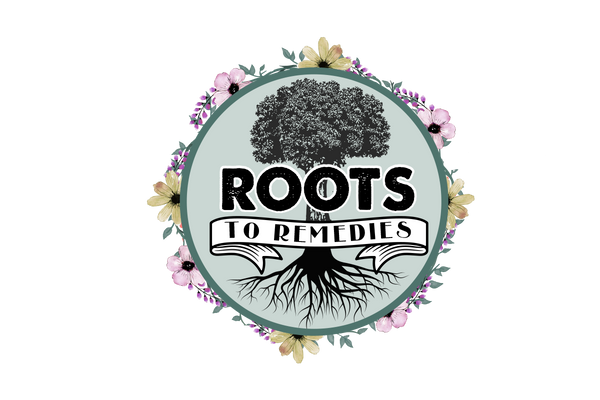HERBAL EDUCATION
Herbal medicine is the practice of using herbs for nurturing total body health and addressing illness based on root cause and overall wellness. It is the genesis of medicine practiced by the first men and women when time began. Aside from romantic legend, herbalism has a written history dating back more than 5000 years.
So many people are frustrated with western medicine and the approach of masking symptoms instead of curing underlying causes. Taking control of your own health can be terrifying. We would like to ease your worry. If you are new to natural living, we want you to know there is a vast community and you do not have to navigate it alone. The intention of this website is to provide education, support and a sense of belonging for those who are reclaiming their personal wellness.
2. Herbal Medicine vs. Western Medicine:
Herbal Medicine focuses on the balance and well being of the individual as a whole, rather than fixating on one symptom in particular. In this way, the natural defenses and immune system of each individual can be guided to operate at optimal function. Herbalism uses dietary and lifestyle choices, along with herbs to help foster the body’s natural health and healing ability. Herbalists operate under the premise that symptoms are each just the body’s signal that something is out of balance and the whole person needs nurturing.
Western Medicine, or what is oddly referred to as Conventional Medicine, takes a more hard targeted approach which focuses entirely on a symptom, or a collection thereof. They employ chemicals, manufactured to mimic the behaviors innate in herbs; but using synthetic material instead. Often surgery or more drastic measures are prescribed to cease the existence of a symptom. This method fails to approach patients on a personal or individual basis, and instead like a game of symptom whack-a-mole.
3. Herbalism vs. Homeopathy
Herbalism refers to Traditional Community and Pioneer Herbalists, Traditional Chinese Medicine practitioners and Traditional Ayurvedic practitioners. In each case, the practitioners use preparations which are concentrations of known beneficial herbs. These practitioners are studied and certified in the use of herbs as remedies. Preparations include various internal and topical applications and are discussed further in the Preparations tab.
Homeopathic preparations are made using the process of dilution. In this process, the selected substance is repeatedly diluted until the final product is chemically indistinguishable from the diluent. Often not even a single molecule of the original substance can be expected to remain in the product. It leans heavily on a cellular memory theory which hypothesizes the liquid the original substance was diluted in will remember it after its removal. Practitioners claim that such preparations, upon oral intake, can treat or cure disease.
HERBAL PREPARATIONS
Herbal options can be overwhelming due to the incredibly versatile nature of plants. In this section, we’d like to break down the various ways to implement herbs in your healthcare. In doing so, we hope to make product selection easy, and more importantly – appropriate, for your individual wellness needs.
1. Dry Herbs / Tea
Most herbs are consumable in their raw form. In this state, some are already powerful plant medicines and need little preparation. An example of this would be tea. Plants which are used to make tea are generally selected because of the bioavailability of their benefits through merely steeping them in hot water. The recipe for tea is simple and so it is not an intimidating choice when exploring wellness through herbs.
1. Oral Options
Typically, when an Herbalist is mixing an extract, the liquid solvents used are glycerin, alcohol, vinegar and purified water. The herb’s beneficial properties are then extracted in a process that is time consuming but produces highly effective concentrations of medicinal herbs. The types of oral extracts are:
- Tincture – A Tincture is a liquid extraction which uses alcohol as the extracting agent.
- Extract – An Extract is a liquid reduction process which used glycerine as the extracting agent.
- Tonic – A Tonic is another liquid extraction preparation where vinegar is used instead of glycerine or alcohol.
- Syrups and Decoctions – A Decoction is an extraction process in which herbs are boiled and reduced in water to obtain their healing properties. Herbalists then use decoctions mixed with honey or agave to form a Syrup. Such is the case with Elderberry Syrup.
3) Topical Options
All topical applications of herbs must begin with an Infusion. Herbal or crystal Infusions are preparations which use soothing carrier oils such as apricot oil, castor oil, coconut oil, hemp oil, olive oil or liquids such as Witch Hazel. The oils or witch hazel are combined with plant material, minerals or crystals in a soaking process where the liquid absorbs the beneficial plant properties and the crystals or plant material can then be left in the mixture or strained off leaving the liquid infused with the benefits. It should be noted that oil infusions are not the same as essential oils but the herbs used to obtain them are the same herbs and carry their benefits. These Infusions are then used to make a variety of products including:
- Rollers – Skin roll on formulas using infused oils and essential oils.
- Magnesium Sprays – Liquid skin application combining magnesium and targeted herbal infusions.
- Crystal Sprays – Liquid room and body sprays with crystal infusion combined with herbal infusions for non toxic and therapeutic freshening.
- Balm – Preparation for lips or skin using infused oils and essential oils. Portable and soothing.
- Salve – Therapeutic skin application using Beeswax and infused oils, sometimes including detox agents. Great for wounds.
- Lotion Bars – Topical formulation combining infused oils, carrier oils and essential oils.
